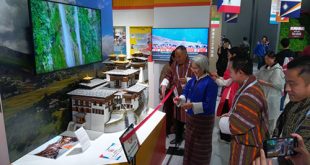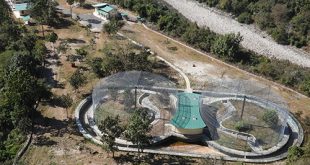The tourism sector in the country is dealing with an imbalance between tourist arrivals and accommodation capacity, a situation that industry representatives say has left hotels overcrowded and struggling for survival.
The Hotel and Restaurant Association of Bhutan (HRAB) has said that unless the country meets the government’s annual target of 300,000 tourists, the hotel industry will continue to face mounting challenges.
In 2019, Bhutan saw the arrival of 315,599 visitors. At that time, the country had 160 hotels, 149 village homestays, and 4,600 guides to serve the growing number of tourists. As of August, 115,536 visitors have been recorded, yet the number of hotels has increased to 397, with 173 village homestays now in operation.
The steep decline in arrivals, largely due to the pandemic and its lingering effects, has left hundreds of hotels competing for a far smaller pool of guests. “There is an overcrowding of hotels and that is a reality we must face,” the HRAB said, saying that the only sustainable solution lies in achieving the government’s tourism target.
Between 2010 and 2015, the governments during that time introduced generous fiscal incentives, including tax holidays, to boost private sector growth. The result was a rapid expansion of the hotel industry, with more than 100 new hotels established in just a few years. From 2015 to 2019, the increase in tourist arrivals encouraged further construction, creating expectations of steady growth.
However, while hotel rooms multiplied, the inflow of tourists has not kept pace. After the peak of 2019, the COVID-19 pandemic severely disrupted travel. In 2024, only 145,065 visitors were recorded less than half the pre-pandemic level.
The HRAB said that short-term support from the government may help the industry survive the next two to three years, but it stressed that these measures would not solve the fundamental problem. “The best solution is to meet the target of 300,000 tourists set by the government,” the association said, stating that only by increasing tourist arrivals can the oversupply of hotel rooms be absorbed.
The association also stated their concerns over minimal marketing efforts, and said that without active and targeted campaigns, Bhutan risks losing out to other destinations. At present, it explained, the association and tour operators are left to market themselves, with limited results. Large-scale tourism marketing events, could provide an important boost and attract more visitors to the country.
Alongside marketing, the HRAB has urged the government to explore practical measures to make Bhutan a more competitive destination. Proposals include introducing group discounts, duration discounts, and pax discounts, which HRAB believes could play a significant role in reviving arrivals and helping the industry recover.
With nearly 400 hotels now operating in the country, hoteliers say that the stakes are high. For many hoteliers, survival depends not only on short-term relief but on the long-term ability to draw larger numbers of tourists back to the country. For the hotel indutry, the path forward is clear, unless the government’s annual target of 300,000 tourists is met, the hotel sector will continue to struggle with overcrowding and underutilization, even as new investments continue to pile into an already saturated market.
 The Bhutanese Leading the way.
The Bhutanese Leading the way.




